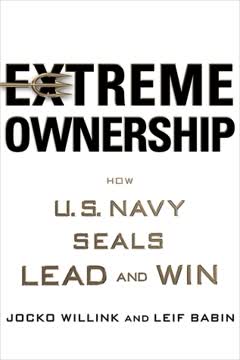つの重要なポイント
1. 信頼は効果的なチームワークの基盤である
信頼とは、チームメンバーが仲間の意図が善意であると確信し、グループ内で防御的になったり慎重になったりする理由がないことを意味する。
脆弱性が信頼を築く。 高パフォーマンスのチームでは、メンバーは自分の弱点、ミス、懸念についてオープンにすることに抵抗がない。この脆弱性に基づく信頼は、自己防衛や政治的な駆け引きにエネルギーを浪費することなく、目の前のタスクに集中できる環境を作り出す。
信頼は生産性を高める。 チームメンバーが互いに信頼し合うとき:
- ためらわずに助けを求める
- 自由に建設的なフィードバックを提供する
- 互いのスキルや経験を評価し活用する
- 同僚に疑いの余地を与える
- オフィスの政治に関与せず、重要な問題に集中する
信頼を築くために、チームは個人的な歴史を共有したり、個々の強みと弱みを話し合ったり、性格評価を利用したりするエクササイズに参加することができる。これらの活動は、チームメンバーが互いを理解し共感するのを助け、障壁を取り除き、より信頼できる環境を育む。
2. 健全な対立はチームの成長と革新に不可欠である
生産的なイデオロギーの対立と破壊的な争いや人間関係の政治を区別することが重要である。
生産的な対立を受け入れる。 アイデアや概念に関する健全な議論に参加するチームは、より良い意思決定を行い、問題を効率的に解決する傾向がある。この種の対立は問題に焦点を当て、個人に焦点を当てず、多様な視点を探求することを可能にする。
健全な対立の利点:
- 活気に満ちた、魅力的な会議
- 重要な問題の迅速な解決
- すべてのチームメンバーのアイデアと視点の活用
- 政治や個人攻撃の最小化
- 革新と創造性の向上
生産的な対立を促進するために、チームリーダーは:
- 対立が必要であり有益であることを認める
- 適切な対立行動をモデル化する
- 早期介入せずに自然な解決を許可する
- 埋もれた対立を発見し対処するための対立マイニング技術を使用する
- チームメンバーが健全な議論に参加するためのリアルタイムの許可を提供する
3. コミットメントは明確さと賛同から生まれる、コンセンサスではない
優れたチームは明確でタイムリーな意思決定を行い、チームのすべてのメンバーから完全な賛同を得て前進する。
明確さと賛同がコミットメントを促進する。 高いレベルのコミットメントを達成するチームは、完全な情報や完全なコンセンサスがなくても、迅速かつ自信を持って意思決定を行う。このアプローチは、迅速な実行と必要に応じてコースを変更する能力を可能にする。
コミットメントを促進するための重要な側面:
- すべてのチームメンバーの意見を聞き、考慮する
- コンセンサスを求めず、希薄な意思決定を避ける
- 不完全な情報でも大胆に意思決定を行う
- チームメンバーが最初は反対しても意思決定を支持する文化を作る
- 合理的な人々は自分の意見が通らなくても賛同できることを認識する
リーダーは以下の方法でコミットメントを促進できる:
- 意思決定前にオープンな議論を奨励する
- 意思決定の期限を明確に設定する
- 共通の目標にチームを整合させる
- 会議の終わりに重要な意思決定をレビューして明確さを確保する
- チームメンバーにフォローアップしてコミットメントを強化する
4. アカウンタビリティはパフォーマンスを向上させ、関係を強化する
生産的な対立に参加し、チームメンバーの視点や意見を活用することで、チームはすべてのアイデアの恩恵を受けたと確信して意思決定にコミットし、賛同することができる。
ピア・トゥ・ピアのアカウンタビリティが重要である。 高パフォーマンスのチームでは、メンバーが互いのコミットメントや行動に対して責任を持つ。この相互のアカウンタビリティは、高い基準の文化を作り出し、チームの目標達成へのコミットメントを強化する。
強いアカウンタビリティを持つチームの特徴:
- チームメンバーが仲間の非生産的な行動を迅速に指摘する
- パフォーマンスの問題を指摘する仲間に対する尊敬がある
- メンバーはリーダーだけでなく仲間からの圧力を感じて改善する
- チームメンバーが苦労している仲間に支援を提供する
- チームはリーダーだけに規律を依存しない
アカウンタビリティを促進するために:
- チームの目標と基準を公開する
- 定期的な進捗レビューを行う
- チームメンバーが互いにフィードバックを提供することを奨励する
- コミットメントの未達成を即座に対処する
- 仲間に責任を持つ人々を報酬する
5. 個々の成功よりも集団の成果に焦点を当てる
結果への無関心は、チームメンバーが個々のニーズ(エゴ、キャリア開発、認識など)や部門のニーズをチームの集団目標よりも優先する場合に発生する。
チームの成功を優先する。 高パフォーマンスのチームは、個々の成果や部門の勝利よりも集団の成果に焦点を当てる。この共有された結果へのコミットメントは、協力を促進し、個人的なアジェンダから生じる破壊的な行動を防ぐ。
結果志向のチームの特徴:
- チームメンバーがチームの成功のために喜んで犠牲を払う
- 個々が他者にクレジットを迅速に与える
- チームが自分自身の認識を求めるのが遅い
- メンバーが結果志向であり、気を散らすことを避ける
- 目標に向かって進展するにつれて士気と生産性が向上する
結果に焦点を当てたチームを作るために:
- チームの望ましい成果を公に宣言する
- 報酬と認識をチームの成果に結びつける
- 自分の利益を優先するメンバーに対処する
- 個人主義的な行動を最小限に抑える
- 集団の所有権と共有責任の文化を作る
6. 5つの機能不全を克服して一体感のあるチームを築く
そして、たった一つのリンクが壊れた鎖のように、1つの機能不全が許されるとチームワークは崩壊する。
5つの機能不全に対処する。 チームの5つの機能不全—信頼の欠如、対立の恐れ、コミットメントの欠如、アカウンタビリティの回避、結果への無関心—は相互に関連している。これらの機能不全を克服するには、各領域を体系的に対処する包括的なアプローチが必要である。
一体感のあるチームを築くためのステップ:
- 脆弱性とオープンさを通じて信頼を築く
- アイデアに関する健全な対立を奨励する
- 明確さと賛同を通じてコミットメントを促進する
- ピア・トゥ・ピアのアカウンタビリティを実施する
- 集団の成果に焦点を当てる
チーム改善のためのツールと技術:
- 個人的な歴史のエクササイズ
- チームの有効性のエクササイズ
- 性格と行動の評価
- 360度フィードバック
- 対立解決トレーニング
- 目標設定と進捗追跡システム
7. リーダーシップはチームの効果を促進する上で重要な役割を果たす
チームで信頼を築くためにリーダーが取るべき最も重要な行動は、まず自分が脆弱性を示すことである。
模範を示す。 チームリーダーは、チームのダイナミクスと効果に大きな影響を与える。望ましい行動をモデル化し、チームワークをサポートする環境を作り出すことで、リーダーはチームを高パフォーマンスに導くことができる。
リーダーシップの主要な責任:
- 信頼を築くために脆弱性を示す
- 生産的な対立を奨励し促進する
- コミットメントを促進するためにタイムリーな意思決定を行う
- チームメンバーに責任を持たせる
- 集団の成果に焦点を当てる
チーム開発のためのリーダーシップ戦略:
- 定期的なチームビルディングエクササイズを実施する
- 明確な方向性と期待を提供する
- 建設的なフィードバックと認識を提供する
- 機能不全な行動に迅速に対処する
- チームメンバーのスキル開発に投資する
- チームの協力と絆を深める機会を作る
最終更新日:
FAQ
What's "The Five Dysfunctions of a Team" about?
- Leadership Fable: The book is a leadership fable that explores the challenges of building a cohesive team. It uses a fictional story to illustrate real-world team dynamics.
- Five Dysfunctions Model: It introduces a model that identifies five dysfunctions that prevent teams from working effectively: absence of trust, fear of conflict, lack of commitment, avoidance of accountability, and inattention to results.
- Practical Solutions: The book provides practical solutions and strategies to overcome these dysfunctions, aiming to help teams achieve better results.
- Broader Application: While focused on executive teams, the principles can be applied to any group working together, from small departments to large organizations.
Why should I read "The Five Dysfunctions of a Team"?
- Improve Team Dynamics: The book offers insights into common team challenges and provides actionable strategies to improve team dynamics and performance.
- Leadership Development: It is particularly useful for leaders who want to foster a more cohesive and effective team environment.
- Engaging Storytelling: The fable format makes complex concepts accessible and engaging, allowing readers to relate to the characters and scenarios.
- Universal Principles: The principles discussed are applicable across various industries and team settings, making it a valuable resource for anyone involved in teamwork.
What are the key takeaways of "The Five Dysfunctions of a Team"?
- Trust is Foundational: Building trust among team members is crucial for overcoming other dysfunctions and fostering open communication.
- Embrace Conflict: Healthy conflict is necessary for effective decision-making and should be encouraged rather than avoided.
- Commitment and Accountability: Teams must commit to decisions and hold each other accountable to achieve collective goals.
- Focus on Results: The ultimate measure of a team's success is its ability to achieve results, which requires prioritizing team goals over individual interests.
What are the five dysfunctions according to Patrick Lencioni?
- Absence of Trust: This dysfunction arises from team members' unwillingness to be vulnerable and open with one another.
- Fear of Conflict: Without trust, teams are unable to engage in healthy, productive conflict, leading to artificial harmony.
- Lack of Commitment: A lack of conflict prevents team members from fully committing to decisions, resulting in ambiguity.
- Avoidance of Accountability: Without commitment, team members are less likely to hold each other accountable for their actions.
- Inattention to Results: When accountability is lacking, team members may prioritize personal goals over team objectives.
How does Patrick Lencioni suggest building trust within a team?
- Vulnerability-Based Trust: Team members must be willing to be vulnerable, admitting weaknesses and mistakes without fear of reprisal.
- Personal Histories Exercise: Sharing personal stories and backgrounds can help team members relate to each other on a human level.
- Behavioral Profiles: Tools like the Myers-Briggs Type Indicator can help team members understand and empathize with each other's differences.
- Leader's Role: Leaders must model vulnerability and create an environment where it is safe for team members to do the same.
What strategies does "The Five Dysfunctions of a Team" offer for encouraging healthy conflict?
- Mining for Conflict: Designate a team member to bring up and address buried disagreements to ensure they are resolved.
- Real-Time Permission: Encourage team members to remind each other that conflict is necessary and productive during discussions.
- Conflict Mode Instruments: Use tools like the Thomas-Kilmann Conflict Mode Instrument to understand and manage different conflict styles.
- Leader's Restraint: Leaders should allow conflict to occur naturally and not intervene prematurely, fostering a culture of open debate.
How can teams ensure commitment according to "The Five Dysfunctions of a Team"?
- Clarity and Buy-In: Ensure that all team members understand and agree on decisions, even if they initially disagreed.
- Cascading Messaging: Review key decisions at the end of meetings to ensure alignment and consistent communication to the rest of the organization.
- Deadlines and Contingency Plans: Set clear deadlines for decisions and discuss worst-case scenarios to reduce fear and encourage decisiveness.
- Leader's Role: Leaders must push for closure and be comfortable with making decisions that may later prove to be wrong.
What role does accountability play in overcoming team dysfunctions?
- Peer Accountability: Team members should hold each other accountable for performance and behavior, reducing reliance on the leader for discipline.
- Public Goals and Standards: Clearly define and communicate team goals and standards to eliminate ambiguity and encourage accountability.
- Regular Progress Reviews: Conduct frequent check-ins to discuss progress and address any issues before they escalate.
- Leader's Role: Leaders should encourage peer accountability and step in only when necessary to maintain high standards.
How does "The Five Dysfunctions of a Team" define a focus on results?
- Collective Goals: Teams must prioritize collective goals over individual or departmental interests to achieve success.
- Public Declaration of Results: Making public commitments to specific results can motivate teams to work passionately toward achieving them.
- Results-Based Rewards: Tie rewards to the achievement of team goals to reinforce the importance of focusing on results.
- Leader's Role: Leaders must set the tone by valuing results above all else and ensuring that team members do the same.
What are the best quotes from "The Five Dysfunctions of a Team" and what do they mean?
- "Teamwork is the ultimate competitive advantage." This quote emphasizes the power of teamwork in achieving success and outpacing competitors.
- "Trust is the foundation of real teamwork." It highlights the importance of trust as the basis for all other team dynamics.
- "Conflict is not a bad thing." This quote challenges the common perception of conflict as negative, advocating for its role in healthy decision-making.
- "A decision is better than no decision." It underscores the importance of decisiveness and the willingness to commit to a course of action.
How does the fable format enhance the understanding of team dysfunctions?
- Relatable Characters: The fictional story allows readers to see themselves and their teams in the characters, making the concepts more relatable.
- Real-World Application: By illustrating the dysfunctions in a realistic setting, the fable demonstrates how they manifest in everyday team interactions.
- Engaging Narrative: The story format keeps readers engaged, making it easier to absorb and remember the lessons.
- Practical Examples: The fable provides concrete examples of how to address dysfunctions, offering a blueprint for real-world application.
What is the role of the leader in addressing the five dysfunctions?
- Modeling Behavior: Leaders must model the behaviors they want to see, such as vulnerability, conflict engagement, and accountability.
- Creating a Safe Environment: Leaders should foster an environment where team members feel safe to express themselves and take risks.
- Encouraging Accountability: Leaders must encourage team members to hold each other accountable and step in when necessary.
- Focusing on Results: Leaders should prioritize team results over individual achievements and ensure that the team remains aligned with its goals.
レビュー
本書『The Five Dysfunctions of a Team, Enhanced Edition』は、その読みやすい寓話形式とチームダイナミクスに関する実践的な洞察で主に好評を得ている。読者は、信頼の欠如、対立を恐れること、コミットメントの欠如、責任回避、結果への無関心という五つの機能不全の明確なモデルを評価している。多くの人々が、さまざまな職場環境に適用可能であり、チームのパフォーマンス向上に役立つと感じている。しかし、その単純化されたアプローチに対して批判的な意見もあり、現実世界での効果に疑問を呈する声もある。本書の物語形式は、複雑な概念をより魅力的にするために称賛されているが、一部の読者はそれを作り物のように感じることもある。
Similar Books























